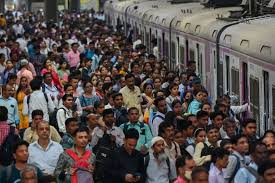
When Prince Paris of Troy eloped with Helen, the beautiful wife of Spartan King Menelaus -- triggering the epic Trojan War in 1250 BC -- the world population was estimated to be hovering around only 50 million.By 1526, when Babur defeated Ibrahim Lodhi at the First Battle of Panipat, founding the Mughal Empire in India, the world population had reached about 500 million.In the following 450 years, the world witnessed another tenfold surge, with the population hitting the five-billion mark in 1987 -- the year Palestinians launched the First Intifada (civil disobedience and mass uprising) against the illegal Israeli occupation of the West Bank and Gaza Strip.In the last 38 years -- between 1987 and 2025 -- the global population further rose from 5 billion to over 8.2 billion today.
Now, what does this growth trend really signify? That’s something we need to reflect on as we observe World Population Day today (July 11). The dramatic rise in the world’s population has been driven by increasing life expectancy, changing fertility rates, and relatively newer trends such as rapid urbanization and accelerating migration. These phenomena demand more focused attention on the urgency and importance of population issues.
The United Nations Development Program first established World Population Day in 1989, as an outgrowth of the interest generated by the Day of Five Billion, which was observed on July 11, 1987.
The day was first celebrated in over 90 countries on July 11, 1990. Since then, the world has started to reckon with the population boom and its future consequences -- especially its relationship to the environment and development -- with renewed and heightened importance.
One way of looking at the rising global population is to see it as a bleak, gloomy prospect for humankind, with our limited earthly resources increasingly under strain. But there’s another way to see it -- one that is more positive, pragmatic, and realistic.
First, we must understand that the world has already experienced the “worst of times” in terms of rapid population growth. We are now approaching a historic juncture in human civilization where populations in country after country are beginning to stabilize.
The global population is projected to continue growing for only six more decades, peaking around the mid-2080s at 10.3 billion -- about 2 billion more than today. After that, the UN projects, the population will begin to decline. That decline will be gradual, with the global population falling by 100 million (from 10.3 billion to 10.2 billion) by the end of the century.
So, in a sense, there is no need to panic about the world bursting under the weight of its enormous population. Yes, there are significant challenges -- but also ample opportunities to utilize human resources in ways that can offset, at least partially, the strains we place on natural resources, the global economy, and the ecosystem. Achieving that, however, requires prudent global leadership to guide us toward a future of new hope and aspiration.
First and foremost, we must realize that the world is not necessarily suffering from “overpopulation,” but from the inequitable distribution of population across different parts (read: Countries) of the world. In some regions, people live in luxury with enormous -- though disproportionately allocated -- resources, while in others, too many people compete for too few resources, enduring abject poverty, joblessness, and bleak futures.
For example, Russia is roughly 116 times larger in area than Bangladesh, yet Bangladesh has over 30 million more people. Canada is nine times larger than Ethiopia, but its population is less than one-third of Ethiopia’s.
In building a “global village,” we now enjoy the free flow of goods from one part of the world to another, thanks to global trade and faster aviation and shipping. But when it comes to the free movement of labour, the world remains far from being a truly global village.
There’s no denying that labour migration has accelerated over the past 50 years or so -- but the question remains: Has it accelerated to anywhere near its potential? Global leaders must work to create an ecosystem where the free movement of labour is not hindered but welcomed.
Countries like Bangladesh, which are rich in human resources, face persistent challenges -- unsafe working conditions, low wages, harassment, and limited social protections. Migrant workers, especially in informal sectors like agriculture, construction, tea gardens, sanitation, and domestic services, often face exploitation without access to basic rights such as freedom of association or collective bargaining.
These migrant workers -- who significantly contribute to the economic development of their host countries -- are often denied fundamental rights, such as formal job contracts, social security, and legal protection. If we are to make the most of our global population, we must reform policies, remove roadblocks, and facilitate labour migration. It’s a win-win scenario -- both for labour-rich economies and for economies that rely on those labour forces.
Countries with limited natural resources but large populations must receive better deals when providing vital human capital to thriving economies. This should never be viewed as a “favour” from developed or developing nations to underdeveloped ones for access to “cheap labour.” Instead, it should be seen as a mutually beneficial arrangement where both the manpower providers and recipients experience growth -- and human resources are optimally utilized. Reaz Ahmad is Editor, Dhaka Tribune.

